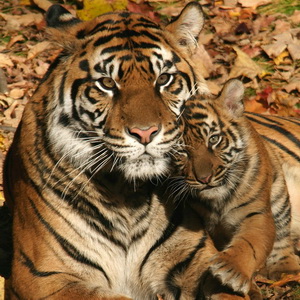Of the nine subspecies of tigers, three are already extinct. All six remaining subspecies of tigers are currently considered endangered animals. There are many different estimates of the number of wild tigers alive today, ranging from 3,500 to as low as 2,000. This number has gotten so low mainly as a result of poaching and habitat destruction. According to the World Wildlife Fund, tigers have lost 93% of their historic range due to habitat destruction. Tiger fur is the primary target of poachers, but according to one article, all parts of the tiger are in demand for use in traditional Asian medicine. Tigers are even part of the illegal pet trade. However, many organizations and governments in countries around the world have begun to work towards protecting tigers from extinction. Movements such as India's Project Tiger establish tiger reserves as protection for the animals. Various laws have made poaching and the pet trade illegal, as well as establishing rules for the protection of the forests tigers inhabit. Many countries also have laws preventing the sale of products made with tiger parts. Even zoos help with breeding programs and by educating the public on the current threat facing tigers. Thus far, these measures have been largely successful, but the work is not done. With numbers this low, tigers still need a lot of help. If you are interested in learning more or donating to the cause, I recommend visiting the World Wildlife Fun website. An Animal Planet survey found that tigers are the world's favorite animal! If we want to keep these and the many other endangered animals around, we've got to keep educating ourselves and others and taking a stand for animals who can't help themselves.

Resources:
http://www.sandiegozoo.org/animalbytes/t-tiger.html
http://www.planetwildlife.com/information/species/tiger?section=other
http://www.indonesianfauna.com/tiger.php
http://www.seaworld.org/animal-info/info-books/tiger/conservation.htm
http://www.worldwildlife.org/species/finder/tigers/threats.html
Image:
http://www.thestar.com/news/world/china/article/762492--china-s-year-of-the-endangered-tiger


